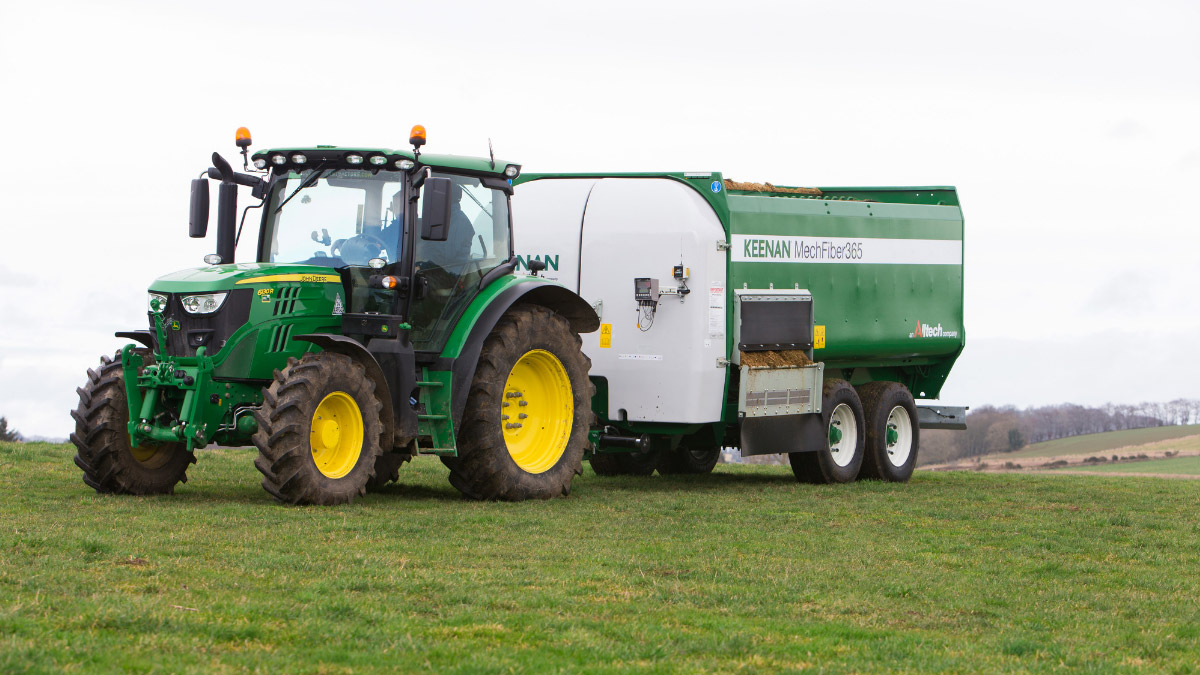Huge Labour Savings and Livelier Calves on Co. Longford Suckler Farm with KEENAN Approved 100
Frank Mulligan is a suckler farmer in Granard, Co. Longford, where he keeps 35 suckler cows along with their offspring. He is also chairman of the cattle mart in Granard. Frank is currently feeding his herd with a KEENAN Approved100 10m³ mixer wagon, drawn by his Massey Ferguson 188.
“The main reason I bought a mixer wagon was to have less work feeding. I have sucklers in three different sheds which was very labour intensive, feeding all animals manually with bags of meal. Now I fill the feeder, feed one shed after the other, and it saves me a lot of time and hard work”, explains Frank.
Further reason for Frank buying his first mixer wagon is that he wanted to incorporate straw into his suckler cow’s diet. Now he able to do this with his KEENAN Approved100 with rear feed-out, making it an easy calving season for him this year. “Most cows have calved at this stage and I noticed less calving problems, the calves are fitter and livelier, says Frank. He has also noticed feed saving through the straw that he’s incorporating into the cattle’s diet.
The main reason Frank bought a feeder was to cut down on hard manual work when feeding his cattle, and while he is happy with the achieved labour savings, Frank is also delighted that, “the cattle are much more content, calving has never been as easy, and the weanlings have thrived over the winter.”















